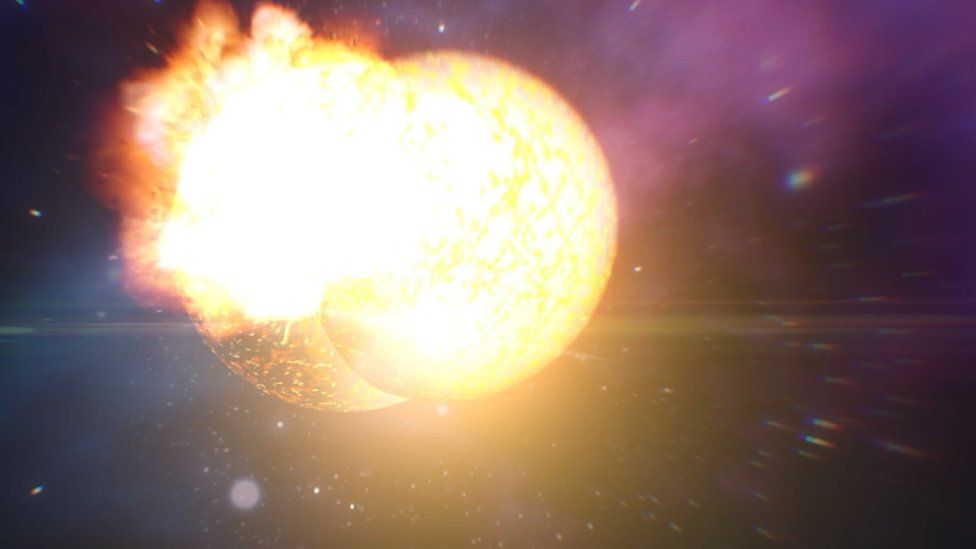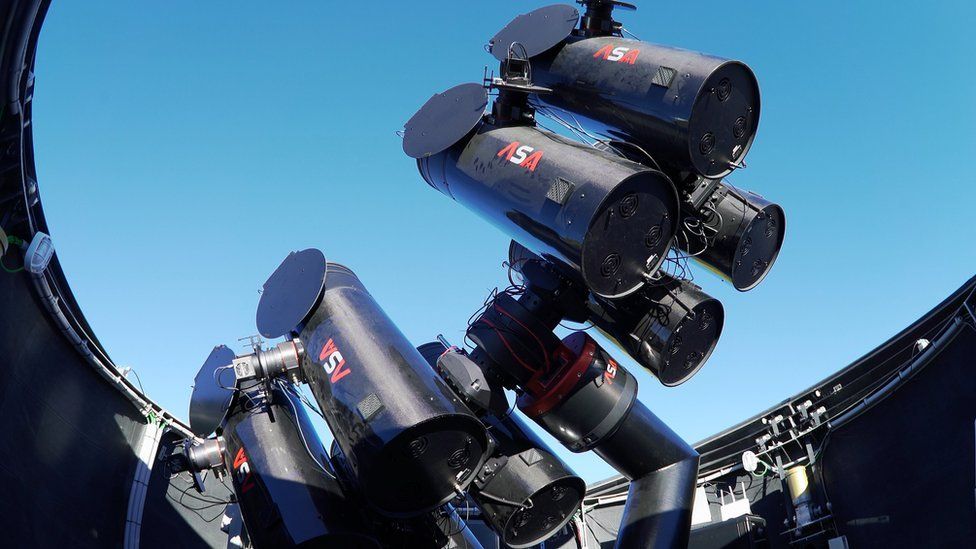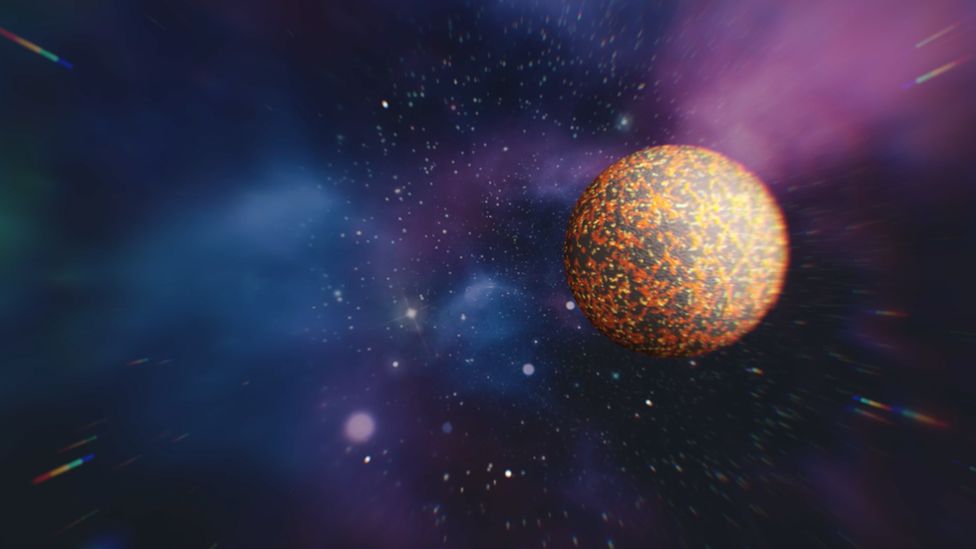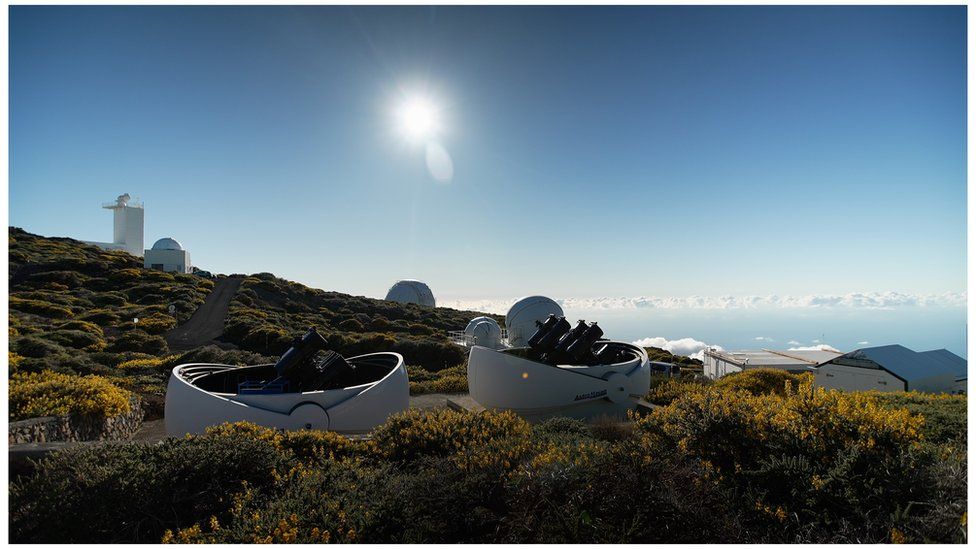



The collision of neutron stars is an opportunity to see what is inside these incredible objects
Collisions of neutron stars are key to our understanding of the Universe.
They are thought to have created heavy metals that formed stars and planets like our own billions of years ago.
Light from the crashes is only visible for a couple of nights so the telescope must race to locate them.
Astronomers observed one of these collisions in 2017, but largely came across it by luck.
The British built Gravitational Wave Optical Transient observer (GOTO), located above the clouds on the volcanic Spanish island of La Palma will now systematically hunt for them.
"When a really good detection comes along, it's all hands on deck to make the most of it," Prof Danny Steeghs, of Warwick University told me on La Palma.
"Speed is of the essence. We are looking for something very short-lived - there's not much time before they fade away".
Neutron stars are so heavy that a small teaspoon of their material weighs four billion tonnes.
The telescope allows astronomers to effectively crack one open to see what is inside.

The new telescope looks like a battery of rocket-launchers
So that it can get a clear view of the sky, the telescope is situated on a mountain peak, home to a dozen instruments of all shapes and sizes, each studying different phenomena.
When its twin domes open, they reveal two jet-black batteries of eight cylindrical telescopes bolted together - structures that look more like menacing rocket launchers. Each battery covers every patch of sky above it by rapidly rotating vertically and horizontally.
A neutron star is a dead sun that has collapsed under its immense weight, crushing the atoms that once made it shine. They have such strong gravity that they are drawn to each other. Eventually they crash together and merge.
When that happens, they create a flash of light and a powerful shockwave ripples across the Universe. It makes everything in the Universe wobble, including, imperceptibly, the atoms inside each one of us.
The shockwave, called a gravitational wave, distorts space. When it is detected on Earth, the new telescope scrambles into action to find the exact location of the flash.

Neutron Stars are suns that have collapsed under the weight of their own gravity, crushing the atoms that once made them shine
The operators aim to locate it within hours, or even minutes of the gravitational wave detection. They take photographs of the sky and then digitally remove the stars, planets and galaxies that were there the previous night. Any speck of light that wasn't there before may be the colliding neutron stars.
This normally takes days and weeks, but now it must be done in real time. It's a big task, done using computer software.
"You would think that these explosions are very energetic, very luminous, it should be easy," said astrophysics professor Dr Joe Lyman. "But we are having to search through a hundred million stars for the one object that we are interested in.
"We have to do this very rapidly because the object will disappear within two days."

The team work with other astronomers to study the collision in greater detail
The team work with other astronomers to study the collision in greater detail.
Once they pinpoint the collision, they turn to larger, more powerful telescopes across the world. These probe the collision in much greater detail, and at different wavelengths.
This process is "telling us about physics at the extreme," Dr Lyman explains.
The mountain peak brings the astronomers a little bit closer to the stars. With the telescope they have a new way to peer into the cosmos, says GOTO's instrumentation scientist, Dr Kendall Ackley.
Traditional astronomy was about being lucky, she says. "Now we're not hoping for new discoveries anymore. Instead, we're being told where to find them, and getting to uncover, piece-by-piece what lies out there in the Universe."
-- Courtesy of BBC News